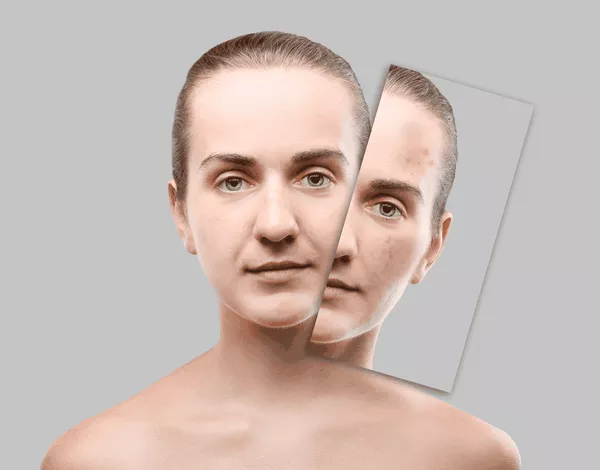Scars are a natural part of the healing process following an injury, surgery, or skin condition. Many individuals wonder how long it takes for scars to fade and become less noticeable. The timeframe for scar fading can vary based on several factors, including the type of scar, its location, individual healing abilities, and proper scar care. In this article, we delve into the process of scar formation and explore the factors that influence scar fading. By understanding the variables at play, individuals can gain realistic expectations and implement effective strategies to support scar healing and minimize their appearance.
Understanding Scar Formation
a. The Healing Process: When the skin is injured, the body initiates a complex process of wound healing. This process involves inflammation, tissue regeneration, and collagen production to repair and strengthen the damaged area.
b. Types of Scars: Different types of scars can form, including hypertrophic scars, keloid scars, atrophic scars, and contracture scars. Each type has unique characteristics and may require specific treatment approaches.
Factors Affecting Scar Fading
a. Scar Type and Severity: The type and severity of the scar can influence its fading time. Superficial scars, such as minor cuts or burns, tend to fade more quickly than deep scars resulting from surgical incisions or severe injuries.
b. Location on the Body: Scars in certain areas, such as the face, may receive better blood circulation and heal faster compared to scars in regions with limited blood flow, like the extremities.
c. Skin Color and Pigmentation: Individuals with darker skin tones may experience more noticeable scars due to increased melanin production. Post-inflammatory hyperpigmentation or hypopigmentation can affect scar visibility.
d. Age and Genetics: Younger individuals tend to heal faster and may experience quicker scar fading. Genetic factors can also influence the body’s healing response and scar formation.
e. Wound Care and Scar Management: Proper wound care and scar management techniques, such as keeping the wound clean, protecting it from excessive sun exposure, and using scar treatments recommended by healthcare professionals, can contribute to better scar healing and fading.
Scar Fading Timeframe
a. Early Stages: In the first few weeks to months, scars typically appear red, pink, or purple and may be raised or slightly swollen. During this time, the body is actively remodeling the scar tissue.
b. Initial Fading: Over the next 3 to 6 months, the scar’s color usually begins to lighten, and the texture may become smoother. Collagen production and tissue remodeling continue during this stage.
c. Continued Improvement: Between 6 months and 1 year, the scar usually becomes flatter, softer, and less noticeable. Continued collagen remodeling helps the scar blend with the surrounding skin.
d. Long-Term Changes: The process of scar fading can extend beyond 1 year, with gradual improvement in color, texture, and visibility. However, individual variations exist, and some scars may continue to fade over several years.
Enhancing Scar Fading and Healing
a. Scar Massage: Gentle massage techniques can help break down scar tissue, improve blood circulation, and promote collagen remodeling. Silicone-based gels or sheets can be used during massage to further enhance scar healing.
b. Topical Scar Treatments: Various topical treatments, such as silicone-based gels, vitamin E creams, onion extract creams, and over-the-counter scar creams, may aid in reducing scar visibility and promoting scar fading.
c. Silicone Gel Sheets and Patches: Silicone gel sheets or patches are commonly used as a non-invasive treatment option for scar management. These products create a protective barrier, hydrate the scar, and assist in reducing redness and thickness.
d. Steroid Injections: For hypertrophic or keloid scars, corticosteroid injections can help reduce scar size, redness, and inflammation. Multiple treatments may be necessary, and healthcare professionals should administer these injections.
e. Laser Therapy: Laser treatments, such as fractional laser resurfacing or pulsed dye laser therapy, can target scar tissue, stimulate collagen production, and improve scar texture and color. These treatments are typically performed by dermatologists or plastic surgeons.
f. Surgical Scar Revision: In some cases, surgical scar revision may be an option to improve the appearance of a scar. This procedure involves removing the old scar tissue and rejoining the wound edges in a manner that promotes better healing and minimizes scar visibility.
Patience and Realistic Expectations
a. Individual Variations: Each person’s healing process is unique, and scar fading can vary significantly. Factors such as overall health, age, scar type, and genetics play a role in determining the timeframe for scar fading.
b. Emotional Support: Coping with visible scars can be challenging, and individuals may benefit from emotional support, counseling, or joining support groups to address body image concerns and boost self-confidence.
c. Sun Protection: Protecting scars from excessive sun exposure is crucial as UV radiation can darken the scar and hinder the fading process. Regular use of sunscreen and wearing protective clothing is recommended.
d. Professional Guidance: Consulting with dermatologists, plastic surgeons, or other healthcare professionals specializing in scar management can provide personalized advice, guidance, and treatment options tailored to individual needs.
Conclusion
The timeframe for scar fading is influenced by various factors, including scar type, location, individual healing abilities, and scar management strategies. While scars may continue to fade over time, complete eradication is not always possible. By understanding the scar healing process, implementing proper scar care techniques, and seeking professional guidance when needed, individuals can support their scar healing journey and achieve the best possible outcome. Remember, patience, realistic expectations, and self-care are essential elements in optimizing scar fading and promoting overall well-being.


